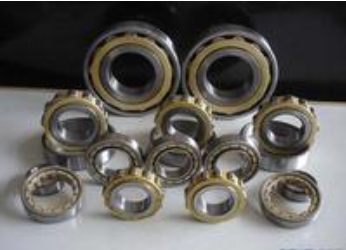 In June, Japan's bearing exports reached 39.233 billion yen, an increase of 1.9% year-on-year, with ball bearings exporting 15.964 billion yen, down 1.3% year-on-year; rolling bearing exports 12.955 billion yen, up 0.2% year-on-year; bearing unit exports 701 million yen , an increase of 15.3% year-on-year; bearing component exports 9.883 billion yen, an increase of 9.1%.
In June, Japan's bearing exports reached 39.233 billion yen, an increase of 1.9% year-on-year, with ball bearings exporting 15.964 billion yen, down 1.3% year-on-year; rolling bearing exports 12.955 billion yen, up 0.2% year-on-year; bearing unit exports 701 million yen , an increase of 15.3% year-on-year; bearing component exports 9.883 billion yen, an increase of 9.1%. In the first half of 2013, Japan's bearing exports were 207.072 billion yen, down 2.3% year-on-year, with ball bearings exporting 82.119 billion yen, down 5.3% year-on-year; rolling bearing exports 68.882 billion yen, down 4.6% year-on-year; bearing unit exports being 3.693 billion yen Yuan, a year-on-year increase of 22.3%; bearing parts exports 52,379,000,000 yen, an increase of 4.5%.
In May 2013, Japan's bearings imported 6.239 billion yen, an increase of 9.0% year-on-year, of which ball bearings imported 3.314 billion yen, an increase of 5.6%; rolling bearing imports 1.646 billion yen, an increase of 7.7%; bearing units imported 160 million. Yuan, a year-on-year increase of 69.2%; bearing parts imports 1.118 billion yen, an increase of 16.2%.
From January to May 2013, Japan's bearings imported 25.18 billion yen, an increase of 1.5% year-on-year, of which ball bearings imported 13.673 billion yen, an increase of 3.0%; roller bearing imports 62.61 billion yen, a year-on-year decrease of 18.0%; bearing unit imports 6.99 Billion Yen, a year-on-year increase of 22.0%; bearing parts imports 4.555 billion Yen, a year-on-year increase of 9.8%.
Japan's bearing companies in the structural adjustment, change the market strategy, change blindly attack to advance and retreat. Its strategic features are: implementation of closure, stop, and transfer, optimization and combination. Expand the market for superior products and shrink the market for weak products. General-purpose bearings are adjusted in large quantities and at low cost; multi-species and small-batch bearings are adjusted to the unit direction. Japanese companies generally attach importance to product development, and based on the premise that the economy has no borders, they are based on global development strategies. The company's unique products are continuously introduced, and new products that meet the requirements of the host can be provided before the host invests according to the needs of users. This has won the trust of consumers around the world.
Although China has become the world’s largest producer of bearing products after Japan, the United States, and Germany in terms of total bearing production volume and production system, China has a strong bearing on bearing production in terms of product development capability, product quality, and manufacturing scale. There is still a big gap between them. Chinese enterprises should strengthen technical cooperation with Japanese companies, especially small and medium-sized enterprises, and combine the advantages of Japanese companies' technology, capital, and management with the advantages of China's market, manpower, and resources to achieve mutual benefits and common development.
In normal production, this part of the wax can be directly added to the polyolefin processing as an additive, which can increase the gloss and processability of the product. As a lubricant, polyethylene wax (PE wax) has stable chemical properties and good electrical properties. Polyethylene wax has good compatibility with polyethylene, polypropylene, polyvinyl acetate, ethylene-propylene rubber and butyl rubber. It can improve the fluidity of polyethylene, polypropylene and ABS and the release properties of polymethyl methacrylate and polycarbonate. Compared with PVC and other external lubricants, polyethylene wax has a stronger internal lubricating effect.
PE WAX, Polyethylene Wax, PVC Lubricants
HENAN JINHE INDUSTRY CO.,LTD , https://www.hnironoxide.com
